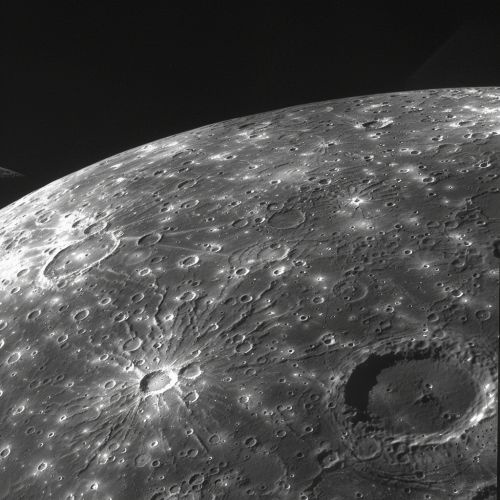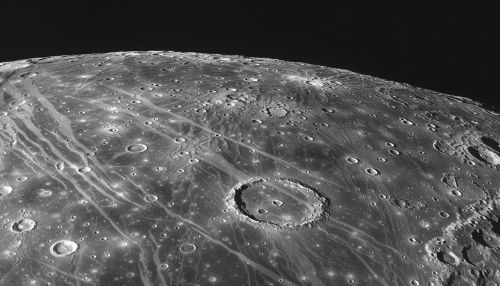Mercury
Overview
Mercury is the smallest and innermost planet in the Solar System. Its orbital period around the Sun is less than any other planet in the Solar System, at just 87.97 Earth days. A sidereal day (the period of rotation) on Mercury lasts about 58.7 Earth days. Named after the Roman deity Mercury, the messenger to the gods, it is one of four terrestrial planets in the Solar System and is a rocky body like Earth.


Physical characteristics
Mercury is one of four terrestrial planets in the Solar System, and is a rocky body like Earth. It is the smallest planet in the Solar System, with an equatorial radius of 2,439.7 kilometers. Mercury is also smaller—albeit more massive—than the largest natural satellites in the Solar System, Ganymede and Titan. Mercury consists of approximately 70% metallic and 30% silicate material.
Orbit and rotation
Mercury has the most eccentric orbit of all the planets in the Solar System. Its eccentricity is 0.205, which means its distance from the Sun ranges from 46 to 70 million kilometers. Mercury's orbit is inclined by about 7 degrees to the plane of Earth's orbit (the ecliptic), as is typical for the inner planets.
Surface and geology
Mercury's surface is similar in appearance to that of the Moon, showing extensive mare-like plains and heavy cratering, indicating that it has been geologically inactive for billions of years.
Atmosphere and climate
Mercury has a very thin and highly variable atmosphere, known as an "exosphere". The pressure at the surface is extremely low, approximately 0.5 nPa (nanopascals).
Magnetosphere
Despite its small size and slow 59-day-long rotation, Mercury has a significant, and apparently global, magnetic field.
Observation and exploration
Mercury is difficult to observe from Earth due to its proximity to the Sun.
